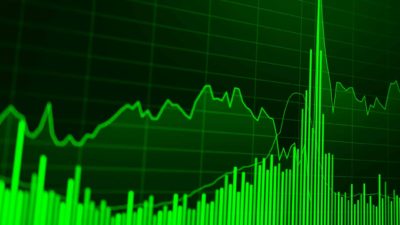A billion dollars is a lot of money.
Now that may sound like I'm stating the obvious. But the truth is a billion is such a mind-bogglingly large number it's hard to really wrap your brain around. That's why you generally see it written out as '$1 billion' rather than $1,000,000,000.
So let's break it down.
We all have a pretty good idea of what $1 million can get us. In Australia that would be a decent house in most capital city neighbourhoods. Or an exceptional house and property in most regional areas.
So $1 billion, then, would get you 1,000 of those houses.
And $29 billion – or $29,000,000,000 – would get you 29,000 of those houses. Enough to live in a different million-dollar home, every day, for more than 79 years.
Like I said. A mind bogglingly large number.
Yet for Gina Rhinehart, $29 billion (or $28.9 billion, to be more precise) is the number she sees listed for her wealth.
That's according to the latest Australian Financial Review (AFR) Rich List, which reports Rhinehart's wealth more than doubled – up 109% – since last year.
How did she achieve that?
Below we take a look at some of the 'billionaire trends' Rhinehart and a few other top rich-listers rode this past year to ever greater wealth.
It may not be shiny, but…
When it comes to this year's billionaire-making trends, you can't beat iron ore.
The iron ore price has been choppily trending higher since hitting lows of US$40 per tonne in December 2015. And it received a big boost this year from, of all things, the coronavirus pandemic.
First, the virus has hampered new supply from Brazil as mining operations were forced to close. And second, demand ramped up as China and other developed nations launch – or plan to launch – major infrastructure projects to bolster their virus weakened economies. (Iron ore is a core ingredient in making steel.)
This has seen the price rise from US$74 per tonne 6 months ago to US$120 per tonne today, a gain of 62%.
It was also a boon for Rhinehart's Roy Hill mine and her company, Hancock Prospecting. According to IBISWorld, Hancock Prospecting notched up almost $11 billion (there's that number again) in revenue, making it Australia's biggest private company.
While you can't buy shares of Rhinehart's iron ore operations on the ASX, you can buy shares of the company founded by Australia's second richest person, Andrew 'Twiggy' Forrest. His net wealth leapt 189% over the past year, to $23 billion.
Forrest's shares in Fortescue Metals Group Limited (ASX: FMG) – part of the S&P/ASX 200 Index (ASX: XJO) – helped drive that momentous growth.
Over the past 12 months, Fortescue's share price is up 94%. And it pays an annual dividend yield of 10%.
According to the AFR, Forrest's wealth grew as much as $500 million per week at one stage this past year.
Oh, and he collected $2 billion in dividends.
A growing, under the radar wealth trend
Both Forrest and Rhinehart also have extensive agricultural property portfolios.
Rhinehart is not only Australia's wealthiest person, she's also the nation's biggest private landowner. And Forrest has continued to expand his own agricultural holdings this year, along with aquaculture where he plans to become a major producer of oysters.
While both of these multi-billionaires' agricultural ventures remain private, ASX investors have a number of options for investing in Australia's agricultural sector.
Rural Funds Group (ASX: RFF), for example, owns a range of quality Australian agricultural properties, including cattle ranches, almond farms, vineyards and sugar plantations.
Rural Funds' share price is up 34% over the past 12 months. At the current share price, it pays an annual dividend yield of 3.5%.
Between the click and the collect
Coming in at number 3 on the AFR's rich list is Anthony Pratt "and family". The Visy Industries founder's wealth surged 27% over the last year to reach $15.6 billion. Visy is one of the world's largest privately owned paper, packaging and recycling companies.
Just as with the price of iron ore, a large part of Pratt's success over the 12 months can be attributed to the pandemic. That's because people working and shopping from home has ushered in a rapid growth in e-commerce. And after you click on the item you want to buy it needs to be packaged before it gets sent.
Visy Industries is a private company. But ASX investors wanting exposure to the packaging business could consider Amcor Limited (ASX: AMC). Headquartered in Melbourne, Amcor is a global packaging company operating across Australasia, North America, Latin America, Europe and Asia.
Amcor's share price is up 8% over the last 12 months. It pays a dividend yield of 2.5%.
Tapping into the future
Coming in at number 4 and number 5 on the rich list are Mike Cannon-Brookes and Scott Farquhar. Both men are co-founders of US-listed, Australian software company Atlassian Corporation PLC (NASDAQ: TEAM).
Cannon-Brookes wealth grew by 73% over the year to reach $16.9 billion. Farquhar's wealth grew by 71% to reach $9.6 billion.
Atlassian's share price has soared 69% over the past year, giving the company a market cap of more than $52 billion.
The already rapidly growing technology sector was also given a boost by the outbreak of the global pandemic. And while some share prices may be looking stretched, technology continues to evolve at an increasingly rapid pace.
That should help support the share prices of technology companies, like Atlassian.








